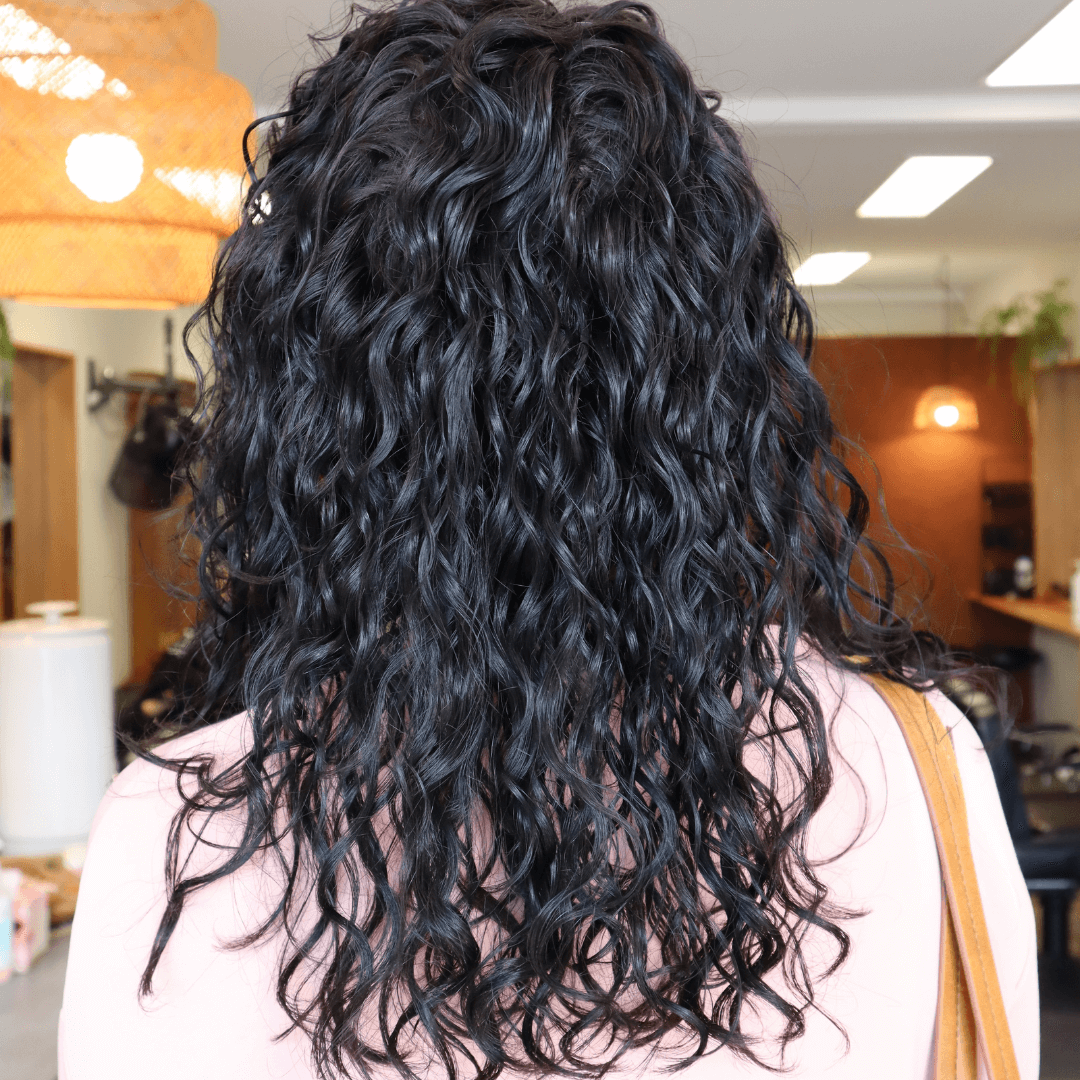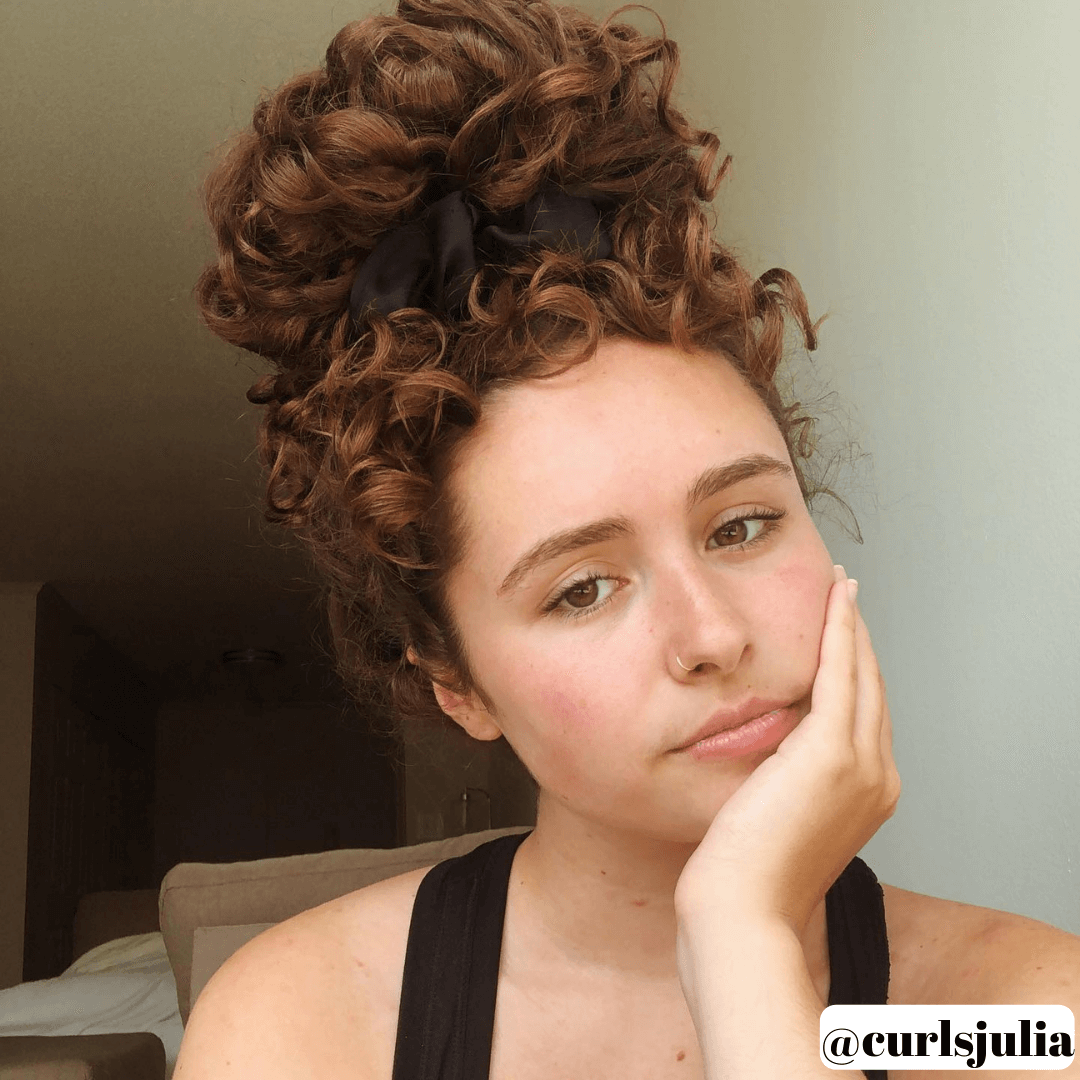How To Care for Type 2C Hair
Wavy hair - Don't care! This is exactly how you should feel about your 2C wavy hair!
Diving into everything you need to know to keep your wavy hair looking its best, we’ve created your ultimate guide for maintaining and styling your delicate waves. We’ll explain everything from defining characteristics of 2C hair to personalised care routines using premium LOHY products.
💡 Not sure if Type 2 hair is your exact match? Or want to know which products are best for your unique hair type? Take our Hair Quiz to find out! Answer a few quick questions and get personalised recommendations tailored to your hair’s needs.

What Exactly is Type 2C Hair?
Type 2C hair is the most defined and voluminous within the Type 2 category. Characterised by its S-shaped waves that are well-defined and can start from the roots. Your waves may flirt with being curls, which is why this type can sometimes also be classified as 3A hair. If you’re thinking ‘type 2C hair doesn't quite sound like me’? take a look at Type 2B or Type 3 Hair.

Identifying 2C Wavy Hair
Understanding your hair type is essential for proper care. Type 2C waves are more susceptible to frizz than type 2A hair and type 2B hair and can have a coarser texture. Waves are tighter and more pronounced, making them almost curl-like, hence the close association with 3A type hair.
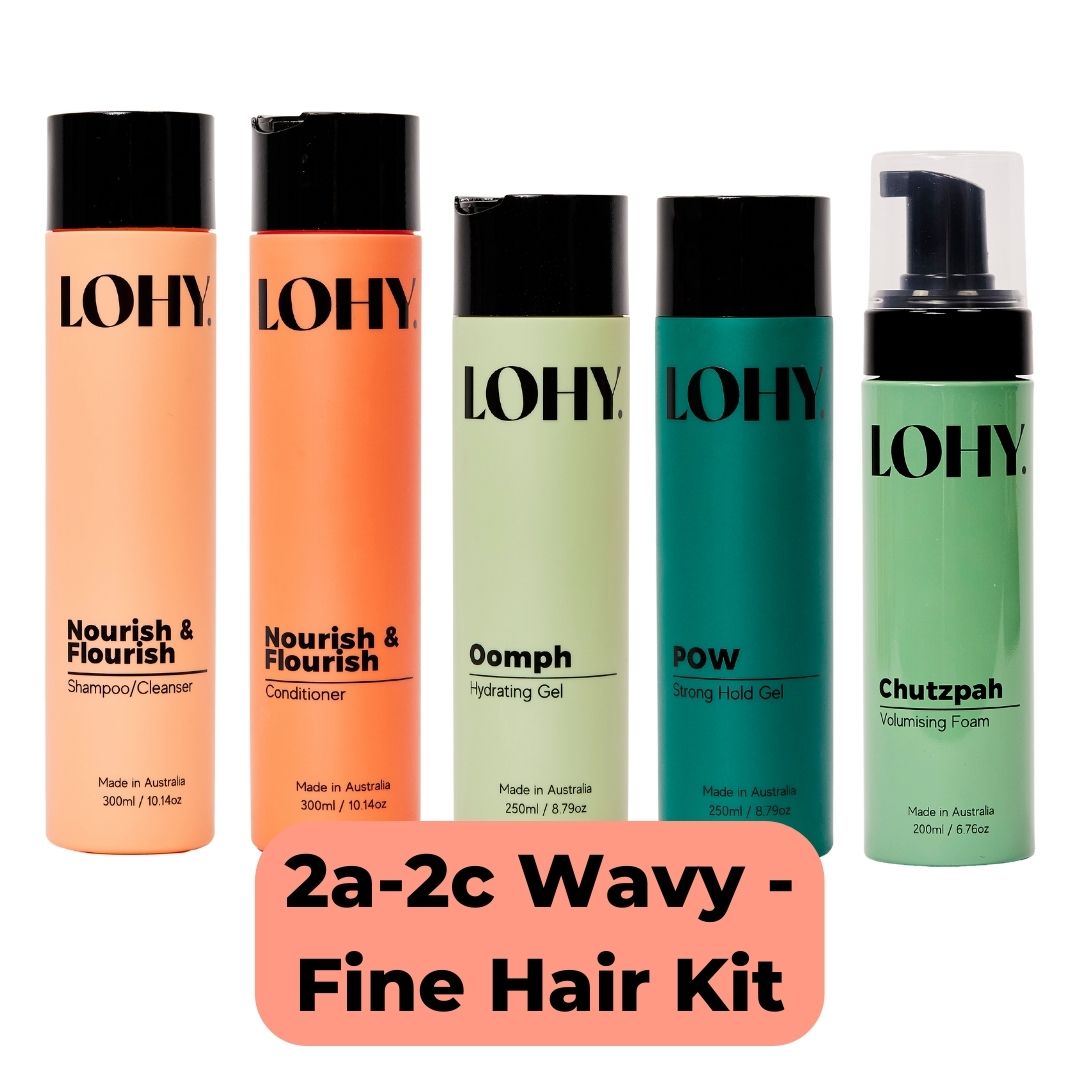
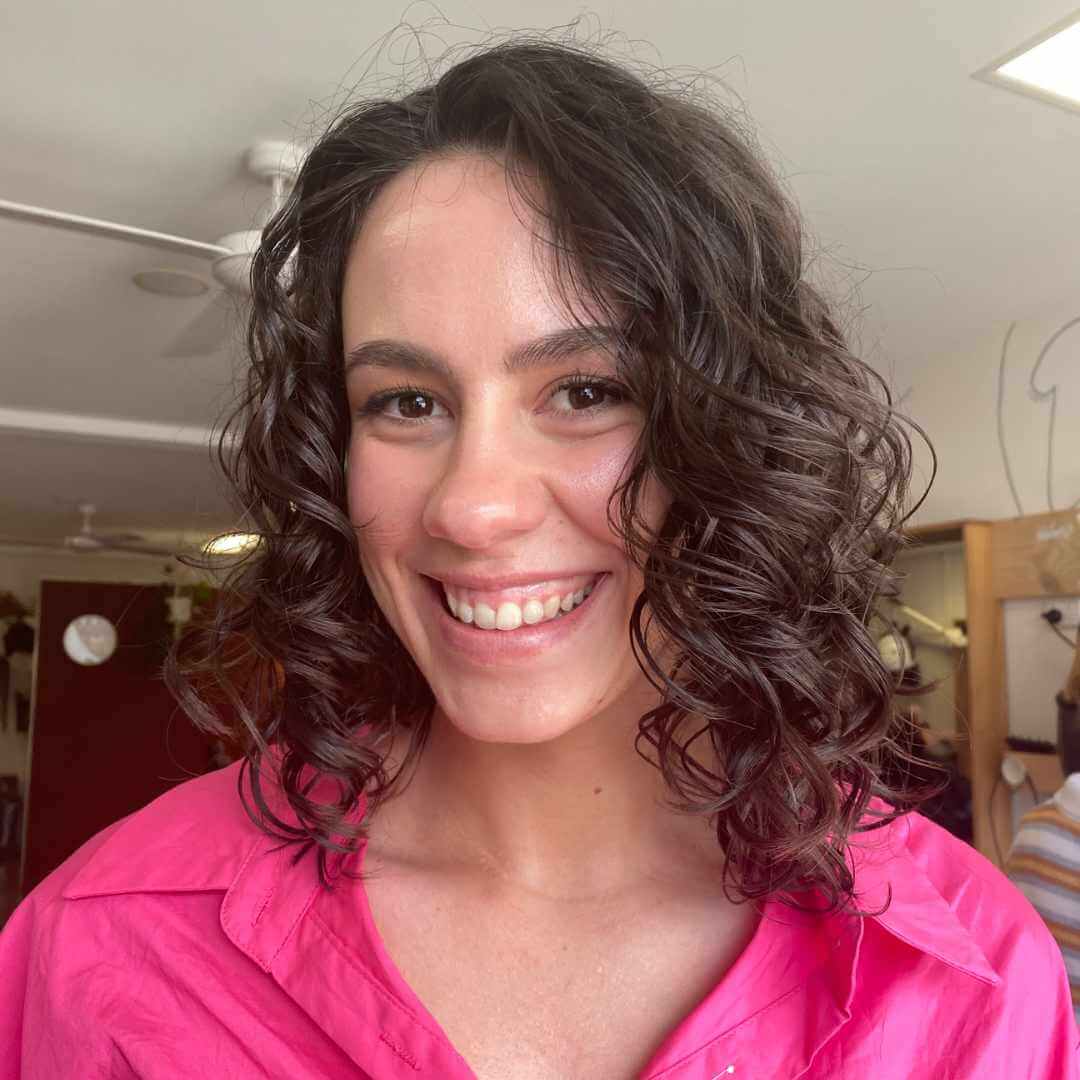
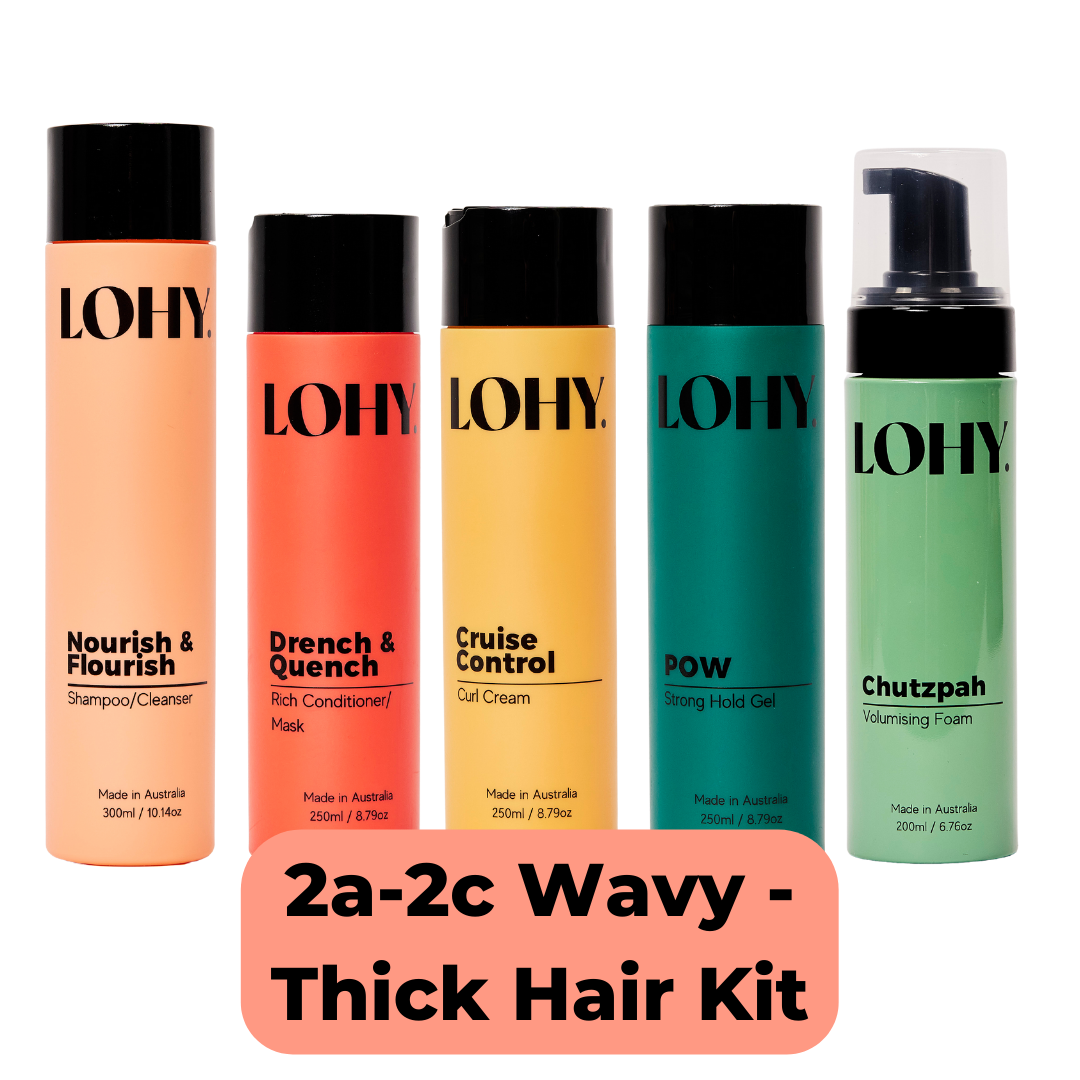
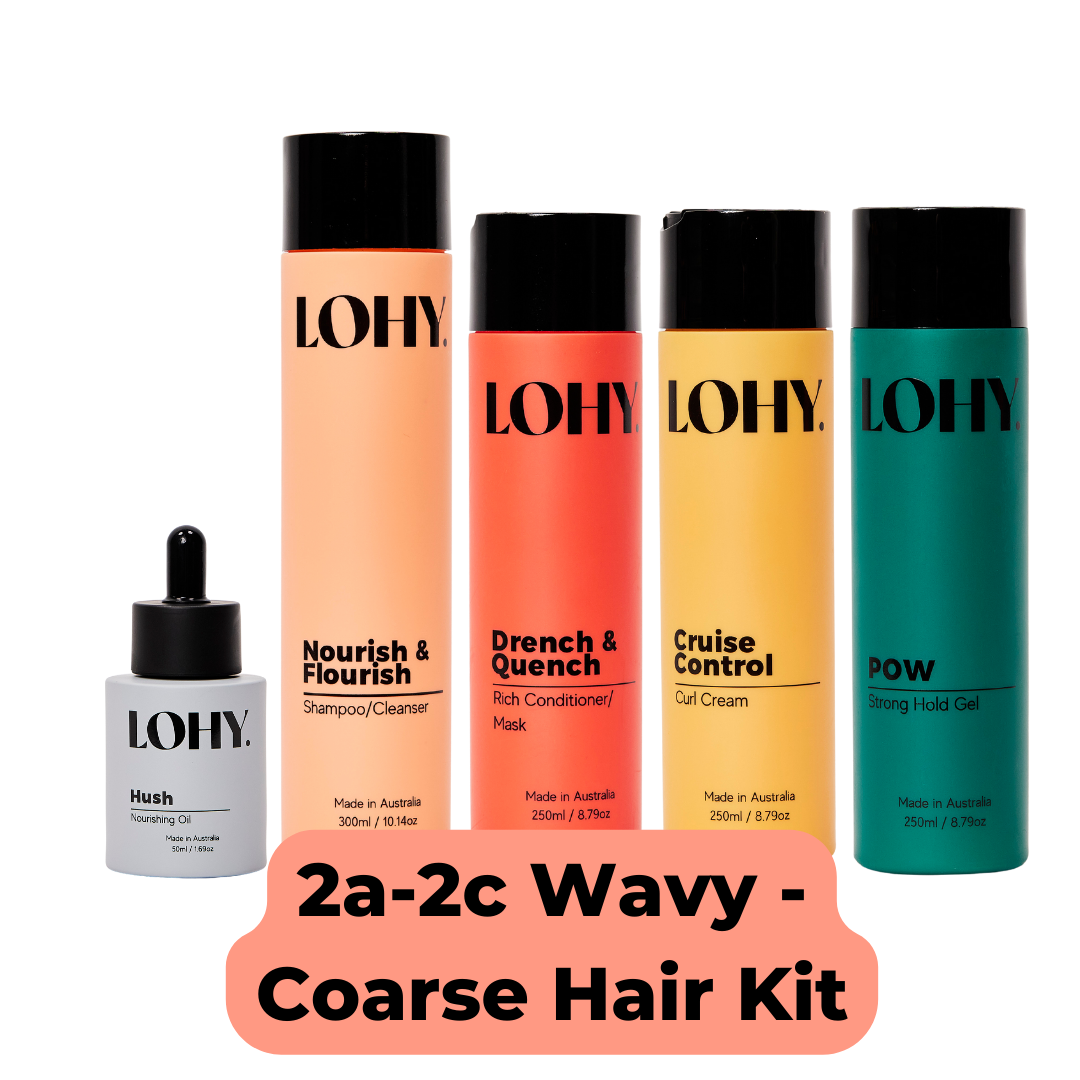
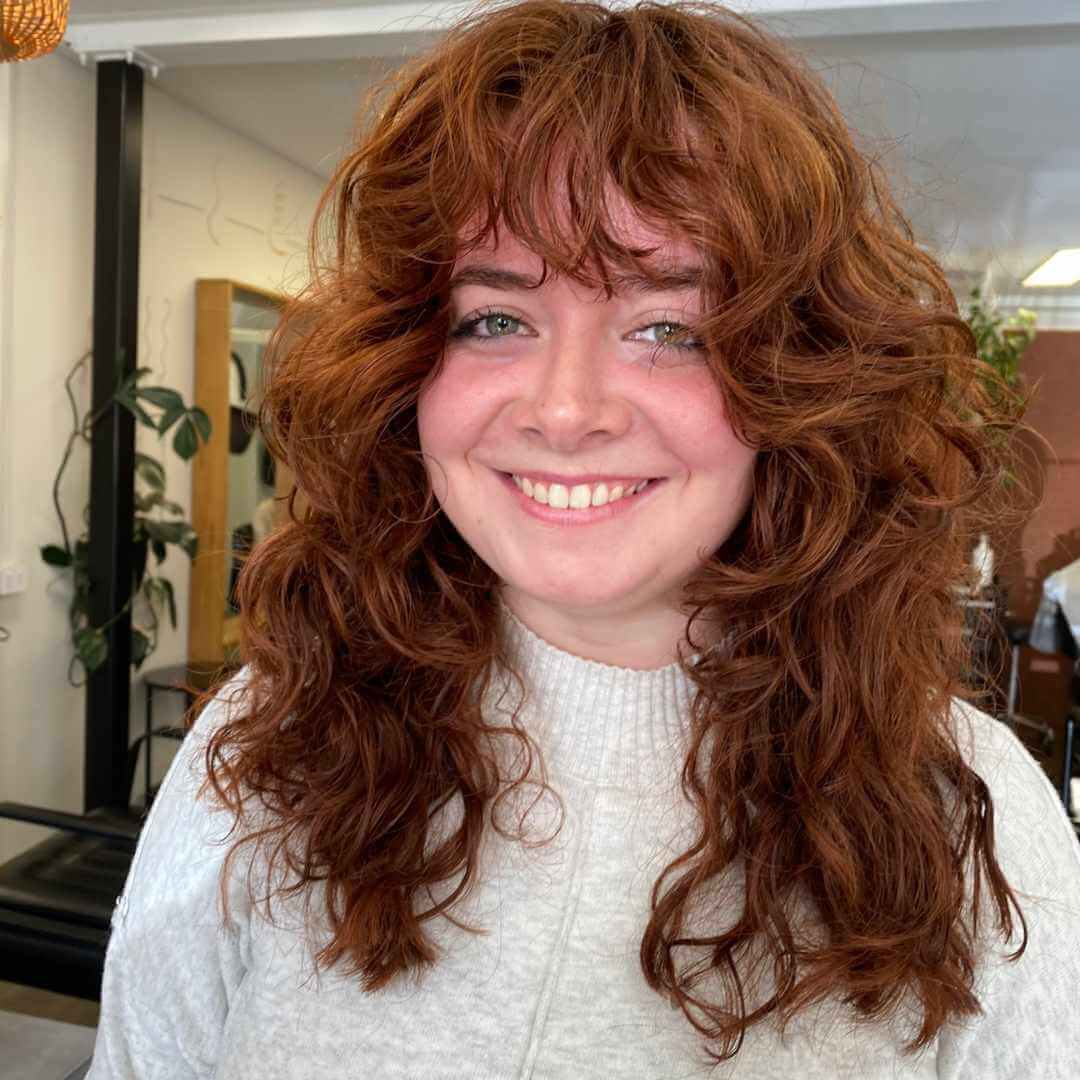
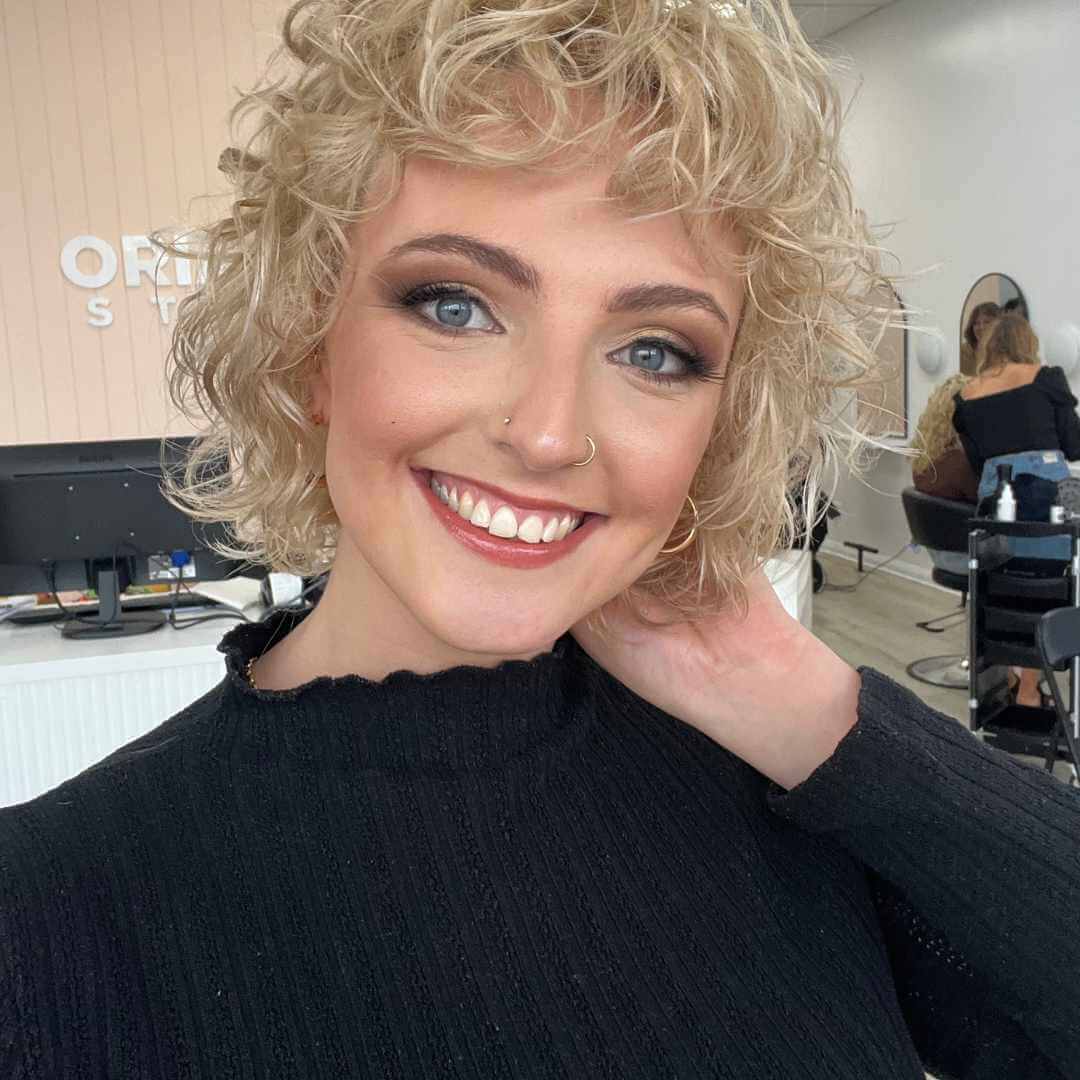
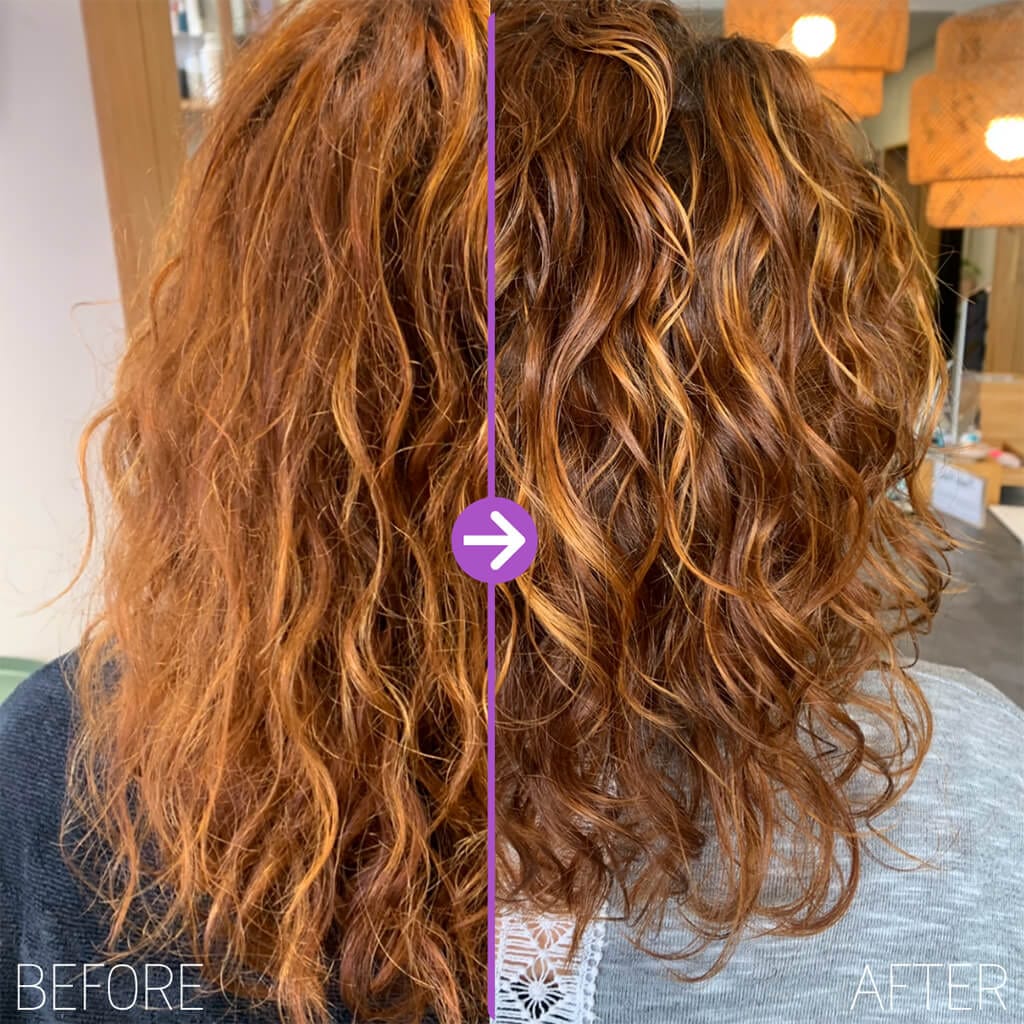

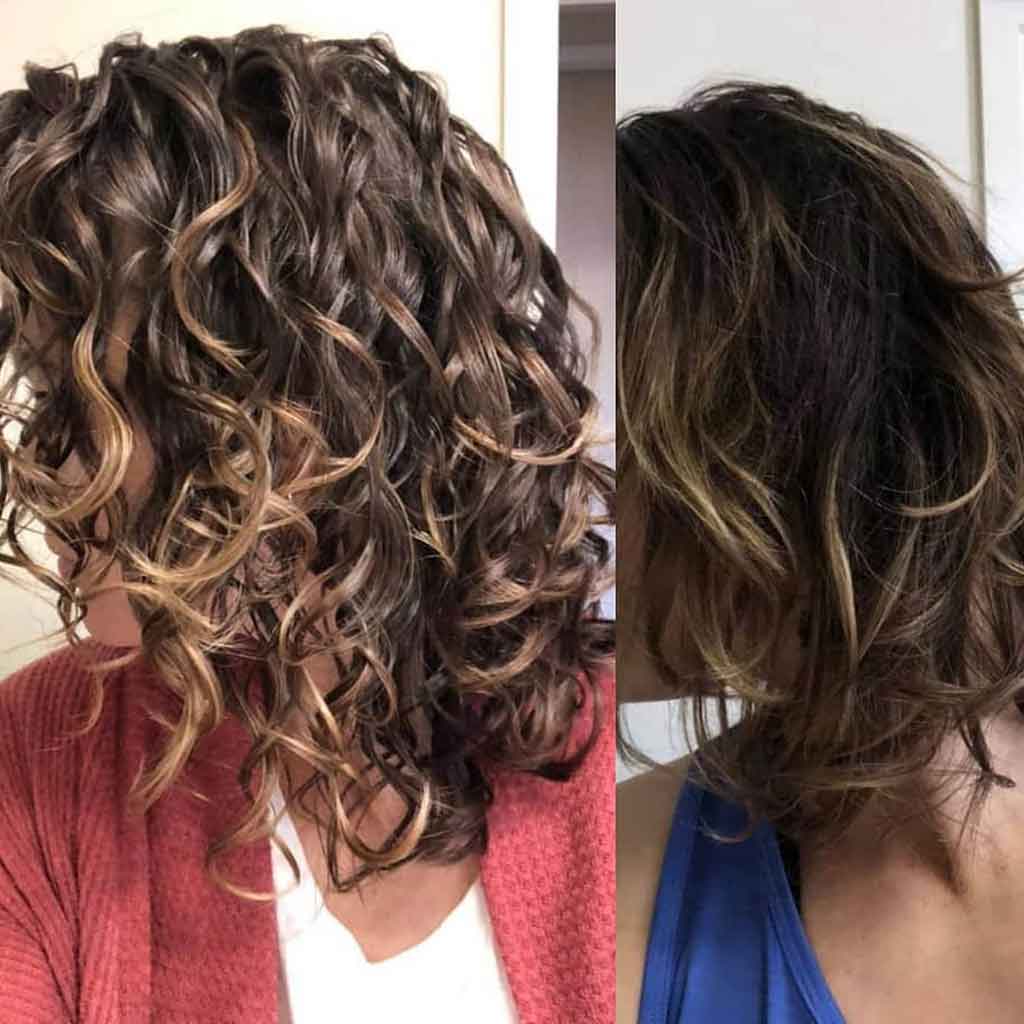

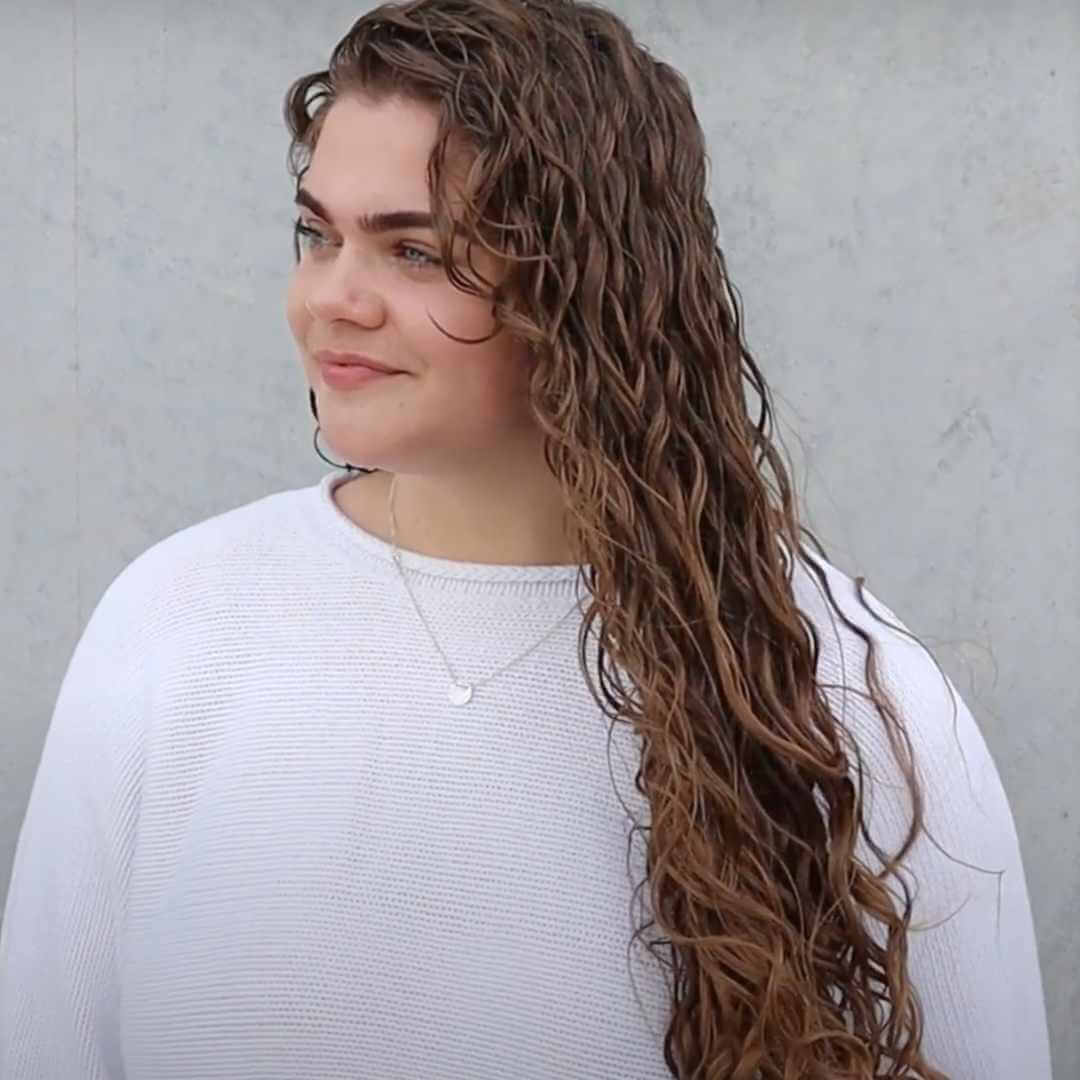
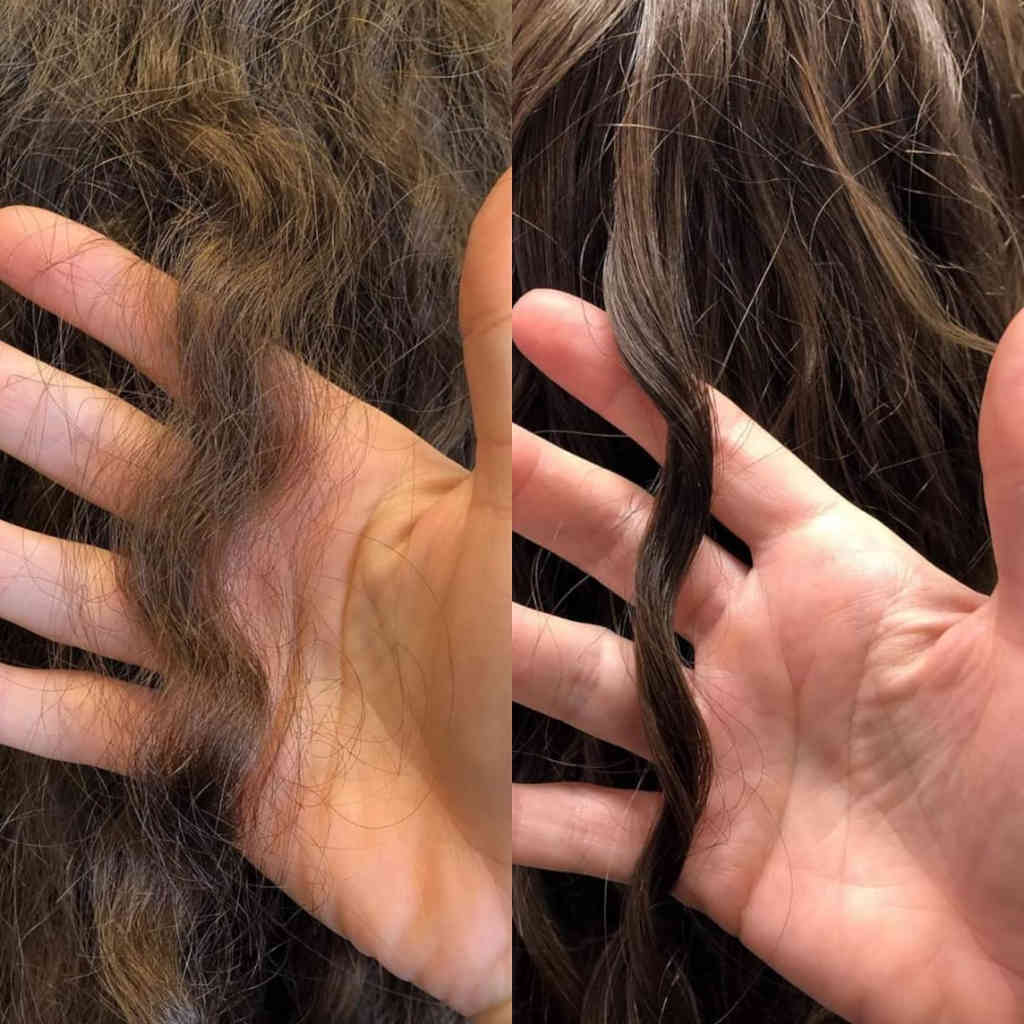

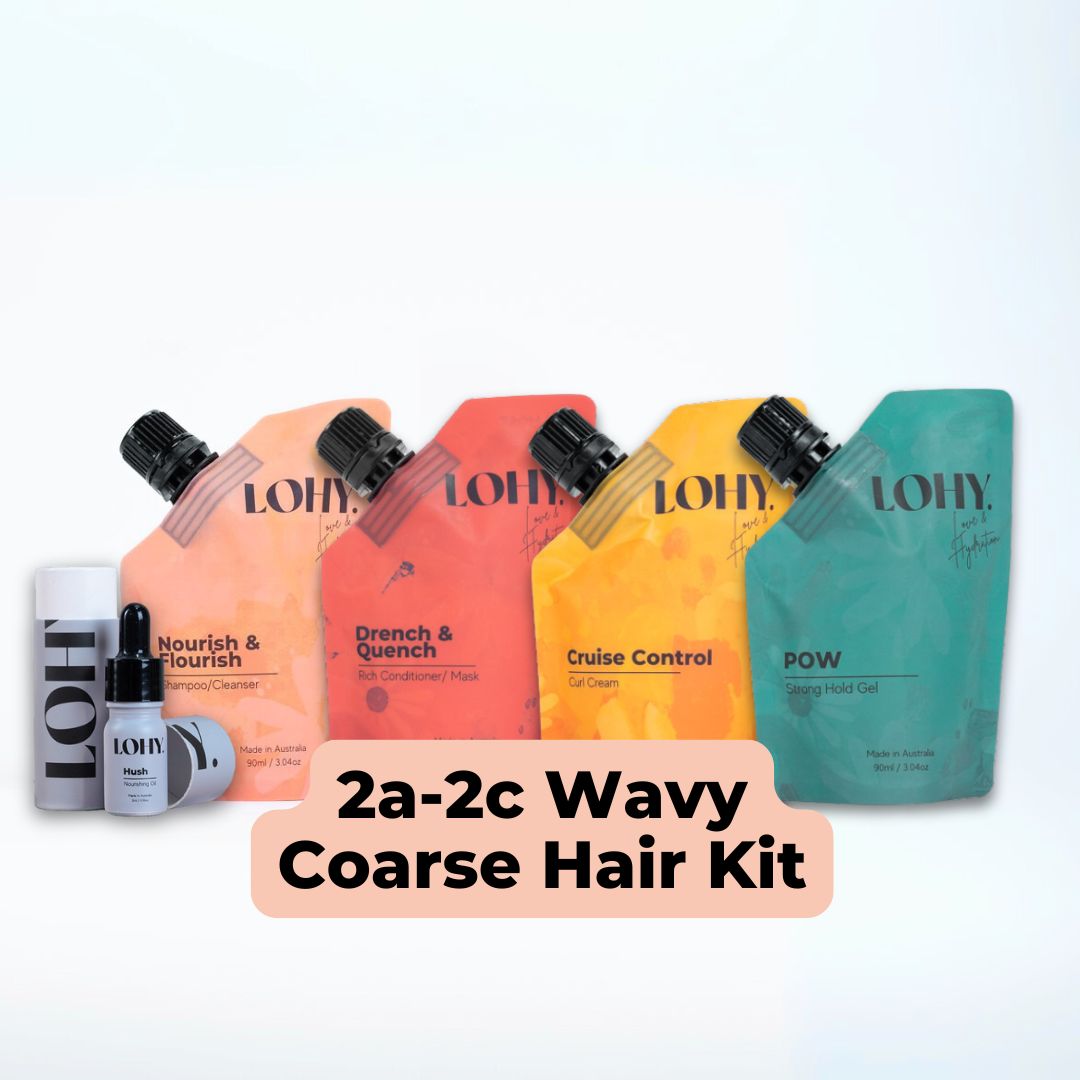
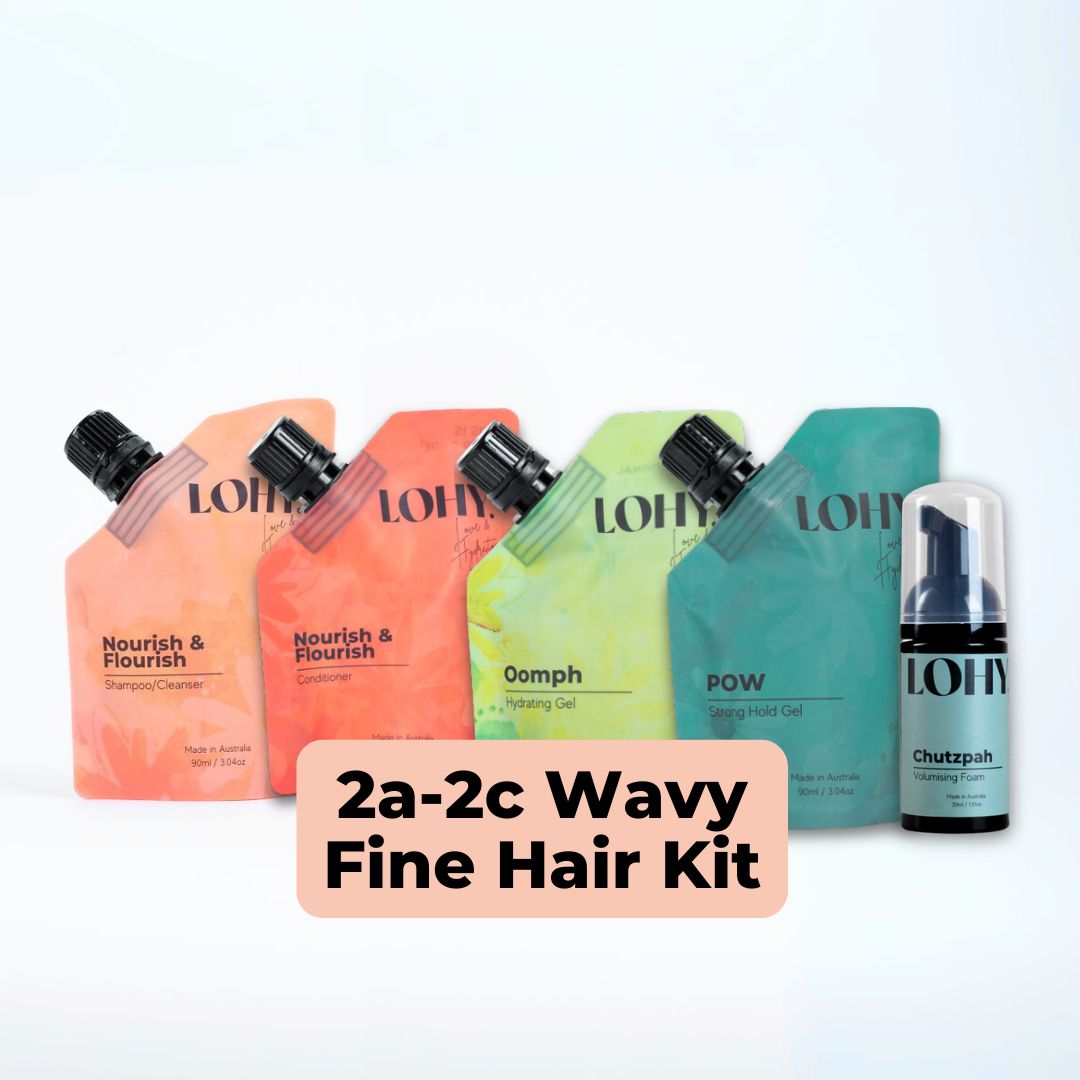
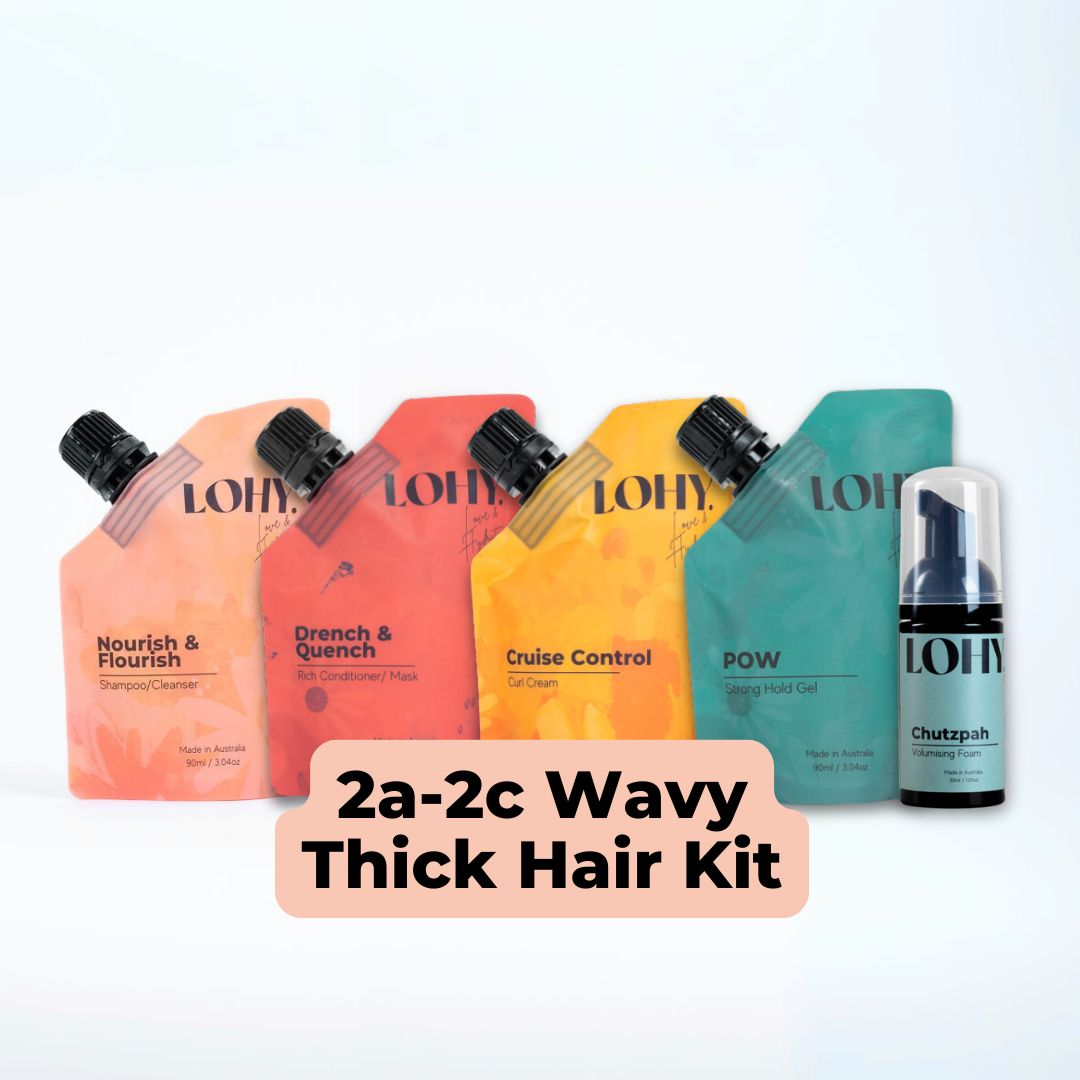
2a, 2b, 2c - Wavy Hair Kit

How is 2C Different from Other Type 2 Hair?
Type 2C hair boasts tighter waves and tends to be more resilient to styling, with a tendency to frizz due to its higher volume and density. It also reacts more intensely to humidity and moisture, making proper care crucial. The main difference however is the more noticeable definition in its wave.
How To Test The Porosity Of Your Type 2C Hair
The Strand Test is a simple yet effective way to determine the porosity of your hair, which in turn can greatly influence your hair care routine.
To perform this test: you need to place a single strand of clean, product-free hair in a bowl of room temperature water and observe how it behaves.

Texture of 2C Hair
Hair texture can range from fine to coarse. Knowing which one you have helps tailor your hair care routine to your exact hair needs. Fine hair, just like low porosity hair requires lighter products, whereas coarse hair can handle richer formulas.
The texture of hair refers to the thickness or diameter of the individual hair strands. The texture is classified into three main types: fine, medium, and coarse. Each of these textures can be found in 2C hair, influencing styling choices and care routines. Let take a look at each type;
Fine Hair Texture: is the thinnest hair texture. For those with type 2C waves, fine hair can be particularly challenging because it can easily become weighed down by heavy products, causing waves to lose their shape and bounce. Fine 2C hair requires lightweight styling products that won't weigh down its natural wave pattern. Volumizing mousses or sprays can enhance body and shape, while too much product can lead to limp, lifeless waves.
Medium Hair Texture: is the most common and considered "standard" in terms of thickness. Type 2C hair with a medium texture strikes a balance between strength and flexibility, usually holding styles well and being relatively easy to manage. For this type of hair, a variety of styling products can be used, from light creams to a mousse, without significant risk of losing the hair's natural volume and waves. A medium texture also means balanced moisture products; neither too heavy nor too light will be beneficial.
Coarse Hair Texture:
Coarse hair has the thickest strands and is often stronger and more resilient to styling than finer hair textures. In type 2C hair, a coarse texture provides a robust wave pattern that is less likely to be pulled out by heavy products. However, this hair type may also be more prone to frizz and dryness. Coarse 2C hair benefits from rich, moisturising products that tame and define the waves while providing enough hydration to keep the hair supple and shiny.
When caring for 2C hair, always consider the texture. It will influence how your hair responds to products, the likelihood of damage from heat styling, and the overall look of your hair. Fine textures should be careful of heat and heavy products, medium textures can experiment with a wider range of products, and coarse textures should focus on moisture and frizz control for the best appearance and health of their waves.
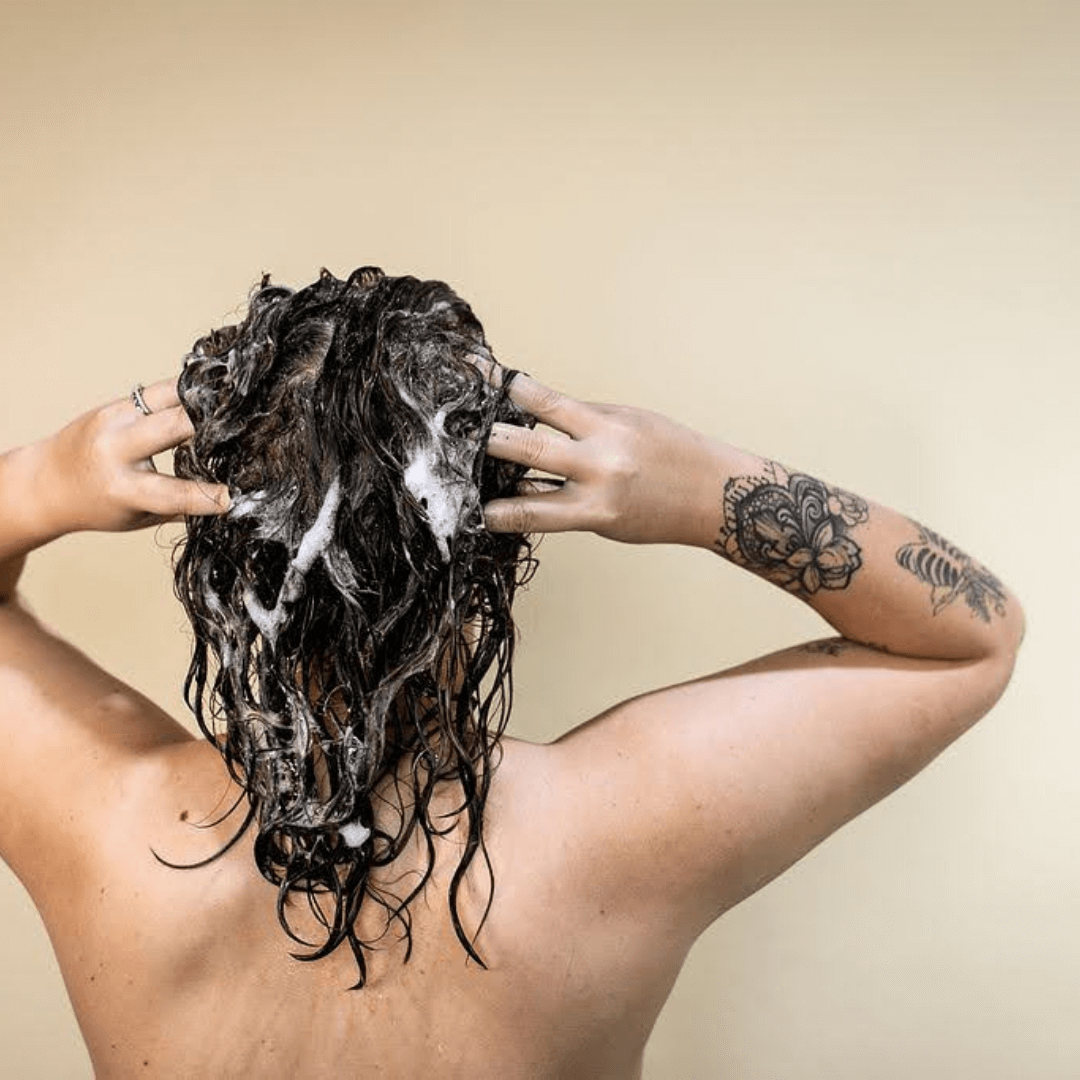
Caring for Your 2C Hair
Caring for your type 2C hair is about balancing the removal of buildup while maintaining moisture to prevent frizz
Washing Your Type 2C Hair
Prep Your Hair:
- Begin by detangling your hair with a wide-tooth comb before you wet it. This reduces breakage and ensures an even wash.
Wet Your Hair:
- Thoroughly wet your hair with lukewarm water. Hot water can dry out your hair, so it's best to avoid it.
Apply Cleanser:
- Take a small amount of LOHY’s Nourish and Flourish shampoo, focusing on the scalp. Gently massage the scalp with your fingertips to lift away dirt and oils.
Rinse Thoroughly:
- Rinse your hair until the water runs clear, ensuring all the shampoo is washed out to prevent buildup.
Apply Hydrating Conditioner:
- Apply LOHY’s Nourish and Flourish conditioner, concentrating on the mid-lengths and ends. For finer hair types avoid the roots to prevent greasiness.
Detangle Gently:
- With the conditioner in, use your fingers, flexi brush or wide-tooth comb to detangle your hair gently.
Final Rinse:
- Rinse with cool water to seal the hair cuticles, which enhances shine and smoothness.
Dry Your Hair:
- Pat your hair with a microfiber towel or an old t-shirt to remove excess water. Avoid rubbing your hair to prevent frizz. Use styling products and a hair dryer with a diffuser attachment for maximum definition.
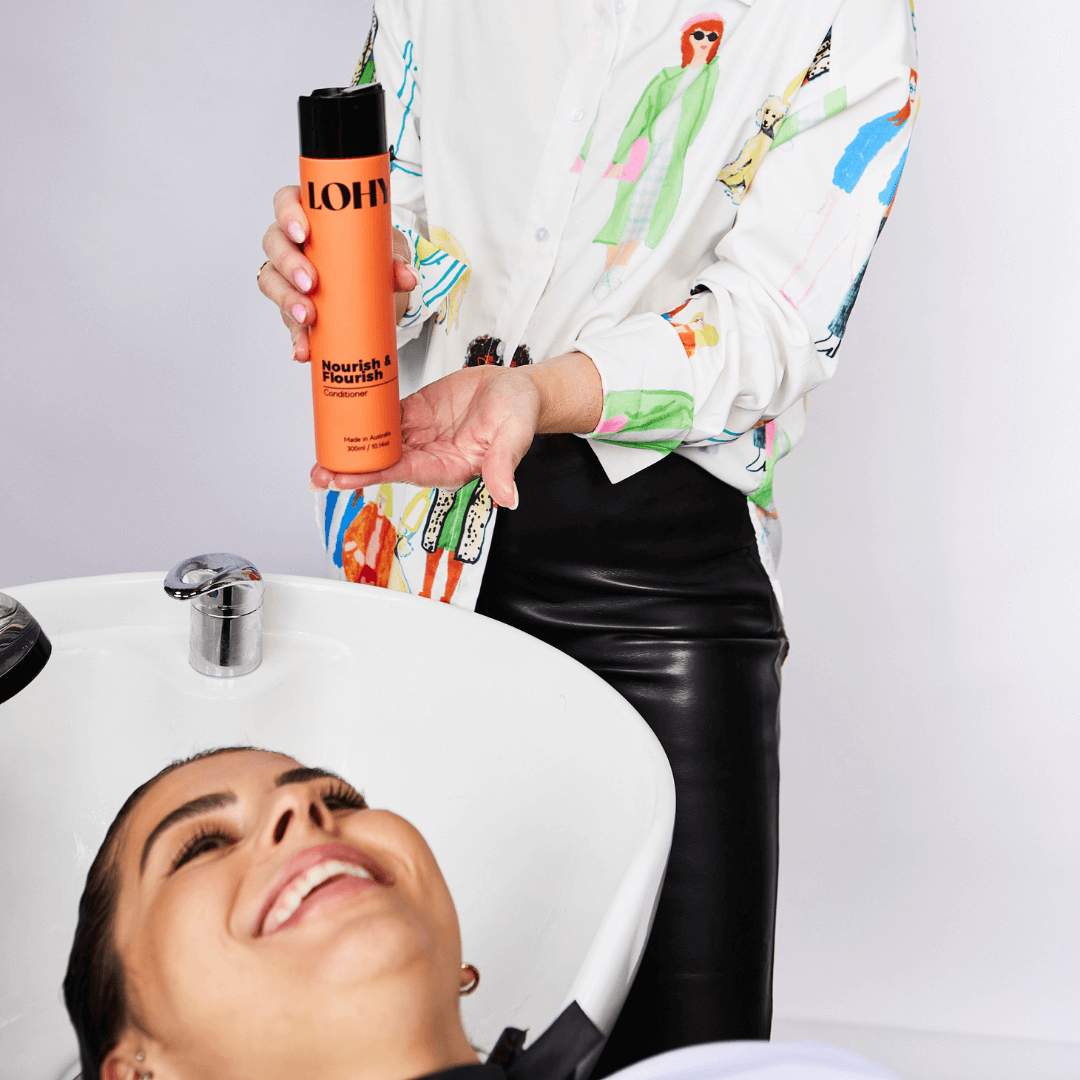
Moisturising + Hydrating Your 2C Hair
Leave-In Conditioner:
- After washing your hair, use a small amount of Nourish and Flourish and a few drops of water to create a leave-in conditioner. Emulsify the product in your hands and rake through your ends and mids while still damp. This will provide an extra moisture barrier and make your hair more manageable.
Weekly Deep Conditioning:
Once a week, replace your regular conditioner with a deep conditioning treatment. LOHY’s Drench and Quench deep conditioner is designed to penetrate the tighter waves of 2C hair, offering nourishment and lasting moisture.
Deep Conditioning Routine for Type 2C Hair
To give your hair a deeper level of hydration, follow this routine:
Apply the Deep Conditioner:
- After cleansing your hair, apply Drench and Quench generously to damp hair. Make sure to cover all strands evenly.
Cover Your Hair:
- Use a shower cap or a warm towel to cover your hair. This will generate heat, which helps the conditioner penetrate deeper.
Wait or Sleep:
- Leave the treatment on your hair for at least 30 minutes, or consider an overnight treatment for intense hydration.
Rinse Out:
- Rinse your hair thoroughly with cool water the next morning or after the recommended duration. Ensure all residue is removed.

Using Oil on Type 2C Hair
To use LOHY’s Hush Nourishing Oil effectively you can do it two ways:
For soft to touch Curls:
- Apply to Dry Hair: Before washing and conditioning your hair, apply a small amount of Hush Nourishing Oil to your dry unwashed hair. Focus on the ends and work your way up, avoiding the roots.
- Warm the Oil: Rub the oil between your palms to warm it up before application. This helps in even distribution and better absorption.
- Use Sparingly: A few drops of the oil are sufficient. Too much can weigh down your waves and make your hair look greasy.
- Wait 30min: Allow the oil to absorb and tent to your thirsty strands. If desired you can leave in overnight.
- Wash as Usual: Proceed to wash your hair as you normally would. The oil will nourish and soften the cuticle layer of your strands.
For scrunching out crispy waves:
Using Hush Nourishing Oil after styling can add shine and softness to your waves by breaking up the crunchy texture often left by gels or mousses. Here's how to scrunch out the crunch with Hush Oil:
- Prepare Your Oil: Start with a few drops of Hush Oil, you can use more depending on the length and thickness of your hair. Rub the oil between your palms to warm it up, which will help it spread more easily and evenly on your waves.
- Gentle Scrunching: Bend forward, allowing your hair to fall towards the ground, or tilt your head to the side to access your waves more easily. Cup the ends of your waves in your oil-coated palms and gently scrunch upward toward your scalp. The key is to use a light squeezing motion to encourage the natural wave pattern without flattening or disrupting the shape.
- Focus on Crunchy Areas: Pay particular attention to the areas where the gel or foam has created a harder cast or left the hair feeling particularly crunchy. Use a little more Hush Oil if necessary, but be cautious not to overapply, as this can make your hair look greasy.
- Work in Sections: If you have thicker hair, you might want to divide your hair into sections to ensure even coverage and scrunch each section individually. This technique ensures that all your waves get the benefits of the oil and none of the crunchy texture is missed.
- Final Touches: Once the crunch has been scrunched out, take a step back and look for any areas that might need a bit more oil or scrunching. Use the remaining oil on your hands to smooth down any frizz at the top of your head or to redefine any waves that have become too loose.
- Final Look: Once your hair is fully dry, give it one last gentle scrunch if needed, and admire the soft, touchable waves you've created with the help of Hush Oil. Your waves should now look defined, shiny, and free from any stiffness or crunch.
Remember, less is more when it comes to oil on your waves. It’s much easier to add more product if needed than to remove excess. Enjoy your beautifully softened, bouncy 2C waves!

Step-by-Step Styling Guide for Type 2C Hair
Achieving beautifully defined waves with type 2C hair can be effortless with the right technique and products like LOHY’s Cruise Control Cream.
Here’s how to go from washed hair to perfectly styled waves:
Step 1: Wash and Condition Your Hair
- Begin with LOHY’s Nourish and Flourish shampoo and conditioner to cleanse and hydrate. Rinse thoroughly to provide a clean base for styling products.
Step 2: Apply Leave-In Conditioner
- Towel dry your hair by gently blotting to remove excess water, then apply a leave-in conditioner (either make your own with Nourish and Flourish or use what you have) to help detangle and provide additional moisture.
Step 3: Use LOHY’s Cruise Control Cream
- With your hair still damp, take LOHY’s Cruise Control Cream and rub it between your palms. Gently work the cream through your hair from mid-lengths to the ends.
Step 4: Define Your Waves
- To encourage wave formation, scrunch your hair with your hands, or use a Flexi Brush to create clumps and evenly distribute your product. For more definition you can use the finger coiling method: twist waves around your fingers to make them even curlier.
Step 5: Plop Your Hair
- If you have time, use the "plopping" method to dry your waves. Lay a microfiber towel or cotton t-shirt flat, flip your head over, and gently place your hair on the shirt. Wrap the shirt around your head and tie it to let it absorb moisture without disrupting the wave pattern.
Step 6: Air Dry or Diffuse
- If you have time, let your hair air dry. However, if you're short on time, or want more definition, use a diffuser attachment on your hair dryer. Set it to a low heat and speed setting and gently cup your waves in the diffuser to dry. Use LOHY’s Hair Combs to create more volume at the roots.
Step 7: Apply Hush Nourishing Oil
- Once your hair is dry, if you notice any frizz, apply a small amount of LOHY’s Hush Nourishing Oil to smooth down any flyaways and add a healthy shine.
Step 8: Set Your Style
- If necessary, use a light hold hairspray to keep your waves in place throughout the day. Avoid touching your hair too much to prevent frizz.
Step 9: Final Touches
- For added volume, you can gently lift and fluff at the roots with your fingers or use a hair pick. Be gentle to avoid disrupting your wave pattern.
Step 10: Nighttime Care
- To maintain your waves overnight, consider sleeping on a satin pillowcase or loosely tying your hair up with a silk scarf to reduce frizz.
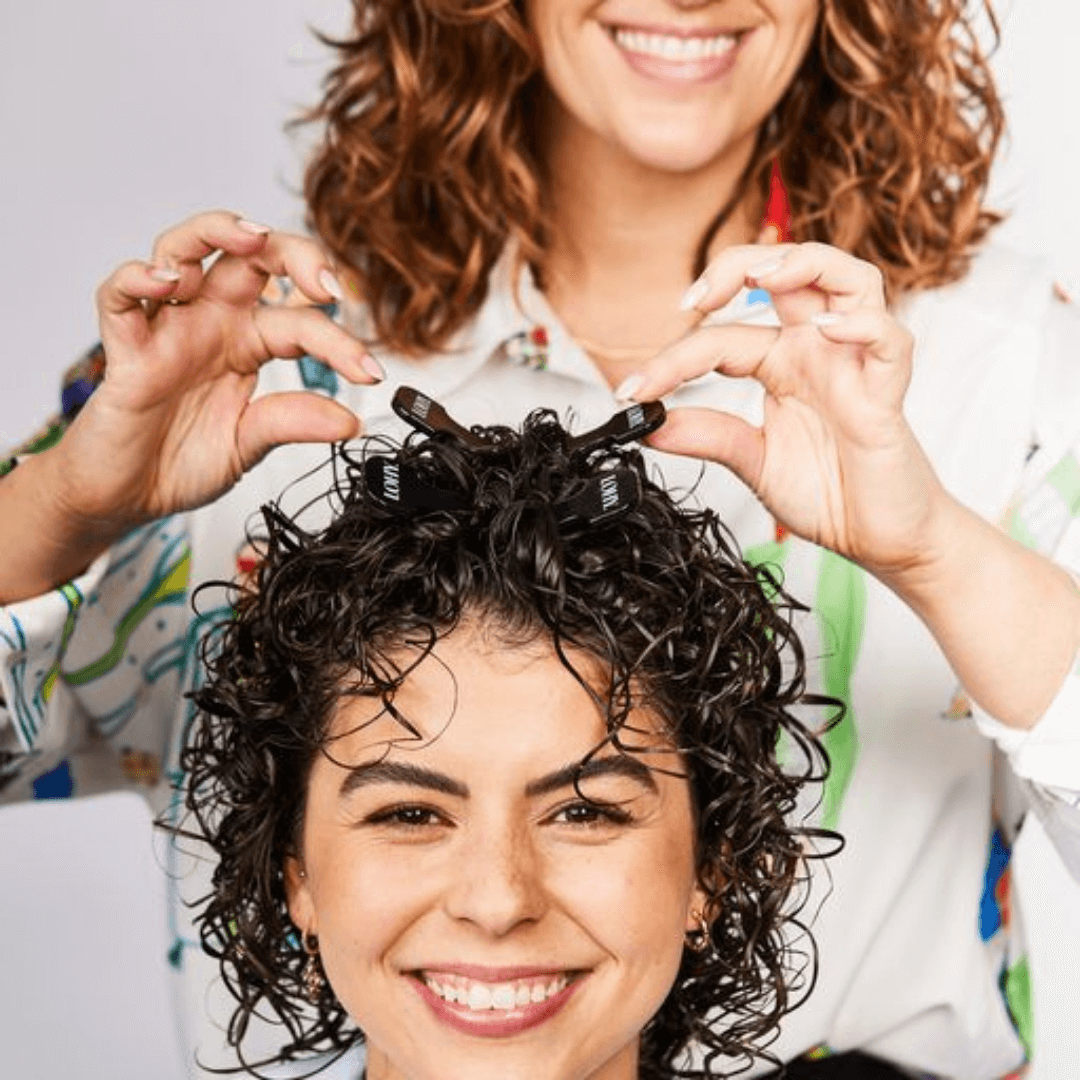
8 Fail-Safe Ways To Enhance Your 2C Hair
1. Hydration is Key: Keep your 2C waves well-moisturised. Regularly use hydrating masks and conditioners that cater to curly and wavy hair types. Look for ingredients like glycerin, aloe vera, and hyaluronic acid that draw moisture into the hair shaft.
2. Avoid Heat Styling: Embrace your natural texture and minimise the use of heat tools to prevent damage. If you must use heat, always apply a heat protectant beforehand.
3. Comb Carefully: To detangle, use a Flexi Brush or wide-tooth comb or your fingers while your hair is wet and conditioned. Start from the ends and work your way up to prevent breakage.
4. Trim Regularly: Get rid of split ends by trimming your hair every 6-8 weeks. This not only keeps your hair healthy but also helps maintain the shape and bounce of your waves.
5. Protect at Night: Sleep on a satin or silk pillowcase to reduce friction that can lead to frizz and tangles. Consider loosely tying your hair up or using a silk scarf or bonnet to protect those waves.
6. Low-Manipulation Styling: Choose styles that don’t require constant handling of your hair. Excessive touching can lead to frizz and may disrupt your natural wave pattern.
7. Balance Protein and Moisture: Your 2C hair needs a good balance between protein and moisture. Use protein treatments sparingly to strengthen hair, and follow up with deep conditioning to maintain elasticity.
8. Refresh Your Waves: On non-wash days, refresh your waves with a spritz of water or a curl refresher spray. You can then reapply a small amount of styling product, like LOHY’s Cruise Control Cream, to redefine any limp strands.
Implementing these tips into your hair care routine will help ensure that your Type 2C waves stay healthy, vibrant, and well-defined. Remember, what works for one person’s waves might not work for yours, so listen to your hair and adjust your routine accordingly.
Styles & Haircut's for 2C Hair
Consider styles that embrace your natural wave. Long layers to add movement or a lob (long bob) to provide structure without sacrificing volume.
Here are some super simple and trending 2A hairstyles that will inspire and make you think twice about your existing hairstyle.
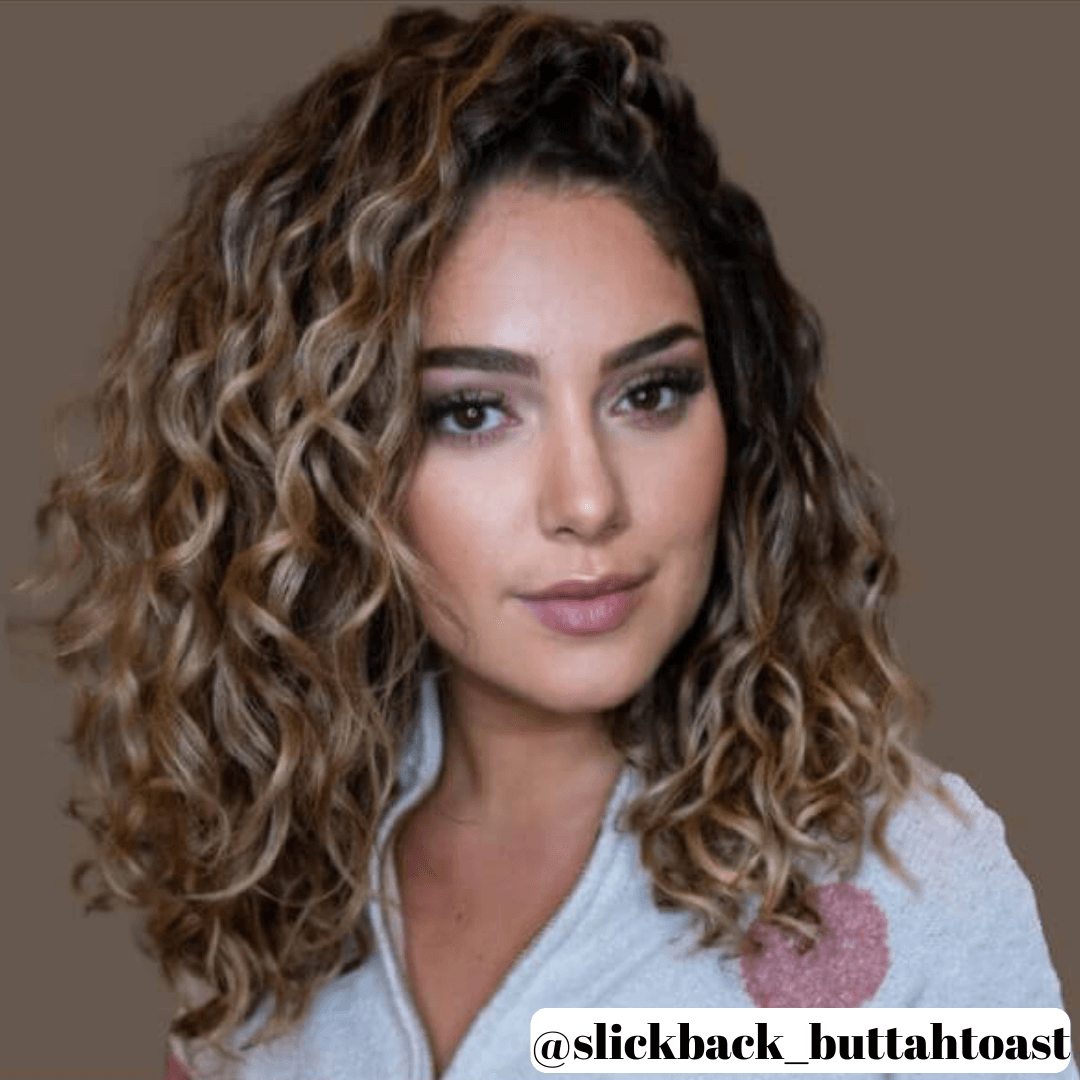
Effortless Beach Waves
For added texture and a playful vibe, beach waves are the go-to. Sofia Richie nails this look with her 2A hair, proving that with the right products and tools— a curl cream and a diffuser —you can mimic the carefree essence of beachy waves in no time. It's a look that leverages the innate waviness of your hair, turning it up a notch for an effortlessly chic finish.
FAQs for Type 2C Hair
Get answers to common questions about Type 2C hair, from the best products to the ideal haircuts. Whether you’re curious about mousse versus leave-in conditioner, or how to straighten your waves naturally, we’ve got you covered.
How do I keep my type 2C hair healthy?
You can keep 2C hair healthy by establishing a balanced hair care routine that includes gentle cleansing, regular conditioning and deep conditioning treatments every few weeks. Minimising the use of heat styling tools will also help. Use products designed for curly or wavy hair that enhance moisture retention without weighing down the curls. Trimming the ends regularly also helps prevent split ends and breakage.
What products are good for 2C hair?
Products that are good for Type 2C hair define curls and control frizz. Sulphate-free shampoos, silicone-free conditioners, leave-in conditioners, curl creams, gels like LOHY's Oomph Gel, and occasionally, lightweight oils are perfect. Avoid heavy waxes or oils that can flatten the curls.
How do you moisturise Type 2C hair?
You can moisturise 2C hair by using leave-in conditioners, curl-defining creams, or hydrating hair masks. Ensure that moisturising products penetrate the hair by applying them to damp hair.
Should I wet 2C hair every day?
The simple answer is no, It’s not necessary to wet 2C hair daily as over-wetting can lead to hygral fatigue, which weakens the hair structure over time. Instead, refresh your curls on non-wash days with a spritz of water or a curl refresher spray to re-activate product and redefine waves.
How do you sleep with type 2C hair?
Protect 2C hair while sleeping by using a silk or satin pillowcase, which reduces friction and prevents frizz. You can also "pineapple" your hair by loosely gathering it at the top of your head with a silk scrunchie to maintain the curl pattern.
Is leave-in conditioner good for 2C hair?
Yes, leave-in conditioners are excellent for 2C hair as they provide additional moisture and make detangling easier. They can also help maintain the definition and manageability of the curls throughout the day.
Is mousse good for 2C hair?
Yes! Mousse can be a great addition to your routine for 2C hair as it provides lightweight hold and definition. Look for a mousse with hydrating properties to keep your curls bouncy without causing dryness.
Does 2C hair have ringlets?
Occasionally. Type 2C hair usually has more defined S-shaped waves, however with the right products and in a humid environment 2C might produce some ringlets.
What is the best haircut for 2C hair?
The best haircuts for 2C hair are those that reduce bulk and enhance the natural curl pattern, such as layered cuts. A mid-length cut can prevent the hair from being weighed down and encourage the natural curls to spring up.
How do you style 2C frizzy hair?
To style 2C frizzy hair, use a defining curl cream or gel to damp hair, then scrunch to enhance the curl pattern. Dry with a diffuser on a low heat setting to minimise frizz. Touch up any frizzy sections with a bit more product once the hair is dry.
How can I straighten my 2C hair naturally?
Naturally straightening 2C hair involves minimising the natural curl without heat. After washing and conditioning, apply a smoothing product and comb your hair straight. Let it air dry or wrap your hair around your head while drying to pull the curl straightener. Keep in mind that this won't produce pin-straight results like a flat iron but can reduce curl and volume.
What does 2C hair look like wet?
When wet, 2C hair typically looks less curly than when it is dry. The water weighs down the hair, stretching out the curls into a more pronounced S-shape or waves. As it dries, especially with the right products, the curls will become more defined and springier.




